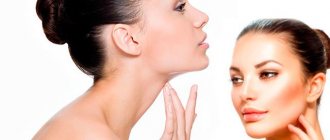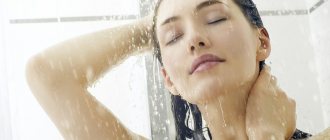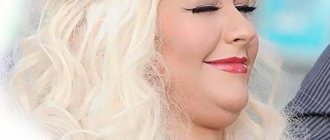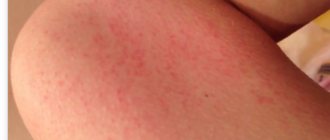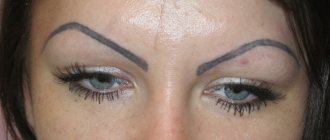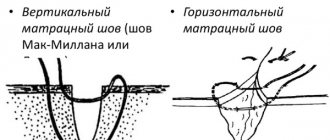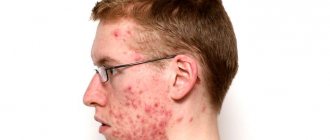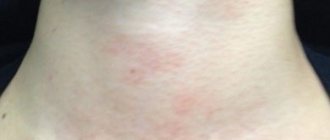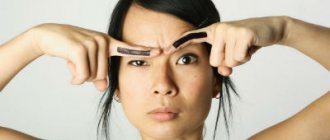For men and women
For a man, an itchy chin is an alarm for his beloved. A careful review of the relationship won't hurt. Habit can dull the senses, a woman will become bored, and if a new face appears on the horizon, she may not be able to resist. In any case: both partners should be more attentive to each other. It is better to deliberately introduce a new wave into the relationship.
So why is your chin itchy? In ancient times, it was believed that if your chin itches, a feast is just around the corner. The men, scratching their beards, looked at the gate to see if someone would come in with a drink. Why does a woman's chin itch? It is possible that an ill-wisher with a beard has appeared. His constant, negative thoughts are tantamount to negative influences that constantly undermine his health. The next option: a conflict situation has already arisen in space, in which the victim will receive a blow to the jaw. It could also be an energy blow to the chin. The lower part of the face has already become an object of negative influence, which is why it itches. Itching also speaks of impending romantic events in a woman’s life. Adventures promise to be stormy, but fleeting. Moreover, relationships arise as suddenly as they leave. The depth and beauty of the upcoming novel will be unique. Why does my neck and chin itch? If one of your close relatives sets off on a long journey and after a while you start to experience itching on your neck and chin, this means that the road has not gone well. Coming back soon. The chin and neck are itching for a new meeting with a person who has arrived from afar or a sudden meeting with a foreigner. If family relationships are established, and your chin itches, you should not be surprised by the sudden opportunity to travel abroad.
Why does the disease develop?
To date, there is no description of a clear mechanism for the occurrence of bronchial asthma, since the causes of its occurrence are diverse, have different roots and varying degrees of influence in each specific case.
One thing is clear that internal and external factors play a role in the development of the disease.
Treatment
At home, a sore throat can be treated as follows:
- drink warm water with lemon and honey , thereby washing away the irritant from the throat. After this, the mucous membrane in the pharynx is moistened, and the crusts become softer;
- gargle with warm water with soda or sea salt added to it;
- rinse the nasopharynx with a warm decoction of oak bark or chamomile;
- chew cloves , as its properties (astringent and irritating) form mucus in the throat, reduce its dryness and relieve itching;
- drink antihistamines that do not have a hypnotic effect (Zyrtec and Loratadine);
- irrigate or rinse the nasopharynx with warm water and aloe juice - 1 tsp. for 1 liter of water. This method helps heal wounds from crusts in the throat and stops a runny nose.
If the mucous membrane is irritated by thick mucus and cough, then treatment is continued to soften it:
- using throat lozenges with essential oils or menthol, by sucking them;
- aerosols containing oils by irrigation;
- putting oil drops with menthol into the nose to prevent a runny nose. When instilling, you should inhale and exhale.
A cure for a sore throat can be prepared at home:
- Fry two chopped onions in a glass of vegetable oil in a frying pan until golden brown. Then remove the onion from the oil, cool the oil and gargle with it.
- Mix ½ cup each of beet and carrot juice, add a tablespoon of honey and drink in small sips. If you drink more often, the effect will be better. This mixture can relieve tickling in the nasopharynx.
- Mix ½ glass of milk. 1 glass of radish juice and 1 tablespoon of honey. Drink the mixture warm, 3 tablespoons after each meal.
- If the itching in the larynx does not go away, then you should try an infusion of peppermint. It produces its effect by rinsing.
- Inhalations can also be done at home. Take a small saucepan (the smaller, the longer and more convenient the procedure will be), pour water and boil it, drop in lavender or eucalyptus oil. Then cover with a towel and breathe in the vapors that are released during evaporation. This procedure well moisturizes the entire nasopharynx.
We recommend reading: Armpits sweat a lot: what to do, how to cope with profuse sweating using traditional methods
Prevention
It is much easier to prevent any disease than to treat it later. You can reduce the risk of an itchy throat by following these rules:
In cold and bad weather, you should dress warmly to avoid catching a cold.
Be sure to visit your doctor twice a year so that your health condition is always under control. He may prescribe vitamins to strengthen the immune system.
People prone to allergies need to ventilate the room more often, gargle more often for prevention, and do wet cleaning.
If gastrointestinal functions are impaired, do not eat spicy or fried foods. It's best to eat a healthy diet every day.
Try to drink less liquid per day.
In case of chronic ENT diseases during periods of exacerbation, timely treatment.
Remove from the room where you live or work everything that can cause allergies.
Do physical exercise every day and try to strengthen your body
The disease commonly known as laryngotracheobronchitis (or simply bronchitis) can begin with tonsillitis and other symptoms (runny nose, watery eyes, slightly elevated temperature, malaise, loss of appetite, burning under the sternum, especially after coughing). As the disease progresses, a frequent short cough and, finally, difficulty breathing appear.
Neurological disorders
The problem is a violation of peripheral innervation. Damage to the central nervous system has nothing to do with this. Weakening of certain muscles leads to a decrease or complete loss of skin sensitivity. The result is itching on the face.
Allergy
Unpleasant sensations are caused by internal and external stimuli. The first group includes food and medications taken. They can be identified if new dishes or ingredients have appeared in the diet, or the chin area has become itchy since taking the medication.
The list of external allergens is much wider:
- scarf, fur,
- animal fur,
- wind, frost,
- dust,
- sweat,
- cosmetics,
- plant pollen,
- ultraviolet radiation.
The manifestation of an allergy can be barely noticeable, expressed as mild itching in the chin area, or cause severe suffering from peeling skin, burning, the appearance of scarlet spots, and rash. In severe cases, additional symptoms are cough, runny nose, difficulty breathing, tissue swelling, and fever.
Moreover, the chin does not always itch due to allergies. Chemical components of cosmetics, tanning, nicotine, alcohol dry out and tighten the skin, causing itching.
Psychological problems
There are many nerve endings grouped in the chin area, so during prolonged overexertion, during stress, or chronic fatigue, this is where it itches first.
If the cause of itching is not identified and eliminated in time, the discomfort will spread to other parts of the body, which will cause even greater inconvenience to the person.
Perioral dermatitis
Rashes around the mouth appear in the form of papules and pustules, grouped symmetrically or on one side. The face looks unaesthetic, the skin itches. One of the causes of perioral dermatitis is a side effect of ingesting corticosteroid hormones. There may be cases of the development of the disease when, when treating the skin on the lower parts of the body with corticosteroid ointments, residues on the fingers fall on the facial area when touched. Also, the components contained in antibronchial tablets and inhalation products irritate the skin and provoke the appearance of dermatitis. Sometimes the cause of the disease is the use of fluoridated toothpaste.
There are many nerve endings grouped in the chin area, so during prolonged overexertion, during stress, or chronic fatigue, this is where it itches first.
Let's work together to make the unique material even better, and after reading it, we ask you to repost it on a social network convenient for you. net.
Diagnostics to rule out other possible problems. Treatment
An examination and additional consultation with a dermatologist are necessary. The following diagnoses require exclusion: psoriasis, neurodermatitis, hyperfunction of the thyroid gland, skin fungus. Neurodermatitis is dangerous not only because of the progressive itching that occurs in the evenings, but also due to its psychological component. Treatment of the skin in this case is not enough. Psychotherapeutic assistance is mandatory for patients with neurodermatitis. A reaction to ultraviolet radiation should not be ruled out. When covering your face from a burn with a towel, do not leave part of your chin exposed. The consequences of sun exposure are peeling and itching.
Pimples itch. Possible reasons
Why do pimples on my chin itch? Most likely, itching indicates a person’s character traits. A pimple on the face is a striking change in a fragment of one’s appearance and speaks of a strong character trait, necessarily negative. A pimple is a pimple. Ancestors believed that the chin would tell about the strength of the spirit. A flaw in the appearance on the chin determines lethargy of actions, low self-esteem, and a passive position in life. For pregnant women, a pimple foreshadowed the birth of a boy.
For a girl dreaming of a groom - the appearance of a contender. Acne from a medical point of view (the term “acne”) is the internal release of “dirty” substances from the body through the skin. It is caused by weakened liver or lymph system function. With prolonged dysfunction of the body's filtering organs, the concentration of pathogenic flora reaches a dangerous level, the body requires immediate release. This process can cause clogging of the sebaceous glands, forming a barrier that becomes a barrier to cleansing the skin pores. Skin imbalance develops, and the preconditions for the appearance of inflammatory subcutaneous processes are formed. Confectionery “distortions” in the menu have a detrimental effect on the functioning of the endocrine system. Baked goods, sweets, chocolate, and ice cream should be consumed in moderation. Sometimes a person begins to eat stress, but it is no secret that the fleeting pleasure of food creates the illusion of freedom from the problem. The dope is dissipating, and I want to “continue the banquet.”
Hot and spicy dishes are time bombs. Combined with polluted air emissions and drinking water that leaves much to be desired, such nutrition poses a serious threat. The pancreas is overloaded, the endocrine system fails. Alcohol is a special topic: its quality, quantity, and most importantly, strength. The higher the alcohol level, the stronger the impact on the liver. Alcohol poisoning weakens the body’s protective functions for more than one day, making the body vulnerable to infection, infection, including skin infections. That's when my chin itches.
Traditional medicine recommendations
If there are rashes on the chin, then you need to take all measures to eliminate the main factor that caused the problem. Therapy prescribed by a doctor helps with this, but traditional medicine can be an addition to it. Recipes and recommendations will strengthen the positive changes achieved, speed up recovery time and enhance the effect of medications on the affected area. When the chin peels off and a characteristic roughness appears, it is necessary to apply a compress after rinsing with running cool water. It consists of a decoction of sage and chamomile. You need to soak the gauze with the liquid, fold it in 2-3 layers, and then apply it to the damaged area. Keep for about 20-25 minutes.
Effective in treating redness will be daily rubbing (2-4 times a day) of the chin with an infusion of chamomile, calendula, yarrow and string. To make it, you will need to take 10 g of herbal mixture, brew it in 200 ml of boiling water, and leave it to infuse for 3 hours. After this, strain and use for its intended purpose. The liquid can also be used as a base when creating masks. Regular use relieves chin irritation 2-3 days after starting use.
Spots on the chin characteristic of the development of an allergic reaction can be eliminated or reduced with a decoction of burdock root and nettle leaves. Plants need to be mixed, taking each in a 1:1 ratio. The mixture is brewed with 200 ml of boiling water. The liquid is also used to wipe the damaged area of the skin or create compresses with a soothing effect.
A plant called aloe works well for itchy chins. It has a restorative property and also quickly reduces the severity of the inflammatory reaction. Feature: the plant can be used as the main component (juice or crushed mass), which is applied to the skin, and also in combination with cucumber juice, chamomile or green tea.
Important! It is recommended that before using aloe leaves, keep them in a cool place for 7 days.
Peeling and redness are caused by a lack of moisture in the skin. Parsley effectively moisturizes it. Its juice is used for this purpose. It should be mixed with sour cream and the resulting mask should be applied to the damaged area. The procedures are carried out once a day, the course is 5-7 days.
Tea tree oil (not essential oil) can help soothe a red chin. It can be used in combination with regular warm water. You need to add 4-5 drops to a glass, mix, and then wash. Infusions and masks that contain 2-3 drops of tea tree oil work well.
A tincture based on celandine is actively used in folk recipes. The plant effectively cleanses the skin and disinfects it. In order to prepare the product, you need to take 1 spoon of celandine (10-15 g), 400 ml of boiling water - about two full glasses. All ingredients must be combined, after which the liquid must be left for 3 hours. Application: drink ½ glass before meals. The infusion should be stored in the refrigerator.
During the recovery period, as well as for preventive effects on the body, tea from the series is used. It should be used in the morning, replacing coffee or regular tea. It is important to take into account here that the drink is used as an auxiliary drink, since it gives a positive effect after a long period of time. In most cases, drinking tea from a series requires at least 2 years to notice changes for the better.
In order to rid the chin of redness, you need to find out the reasons for the changes. Only after passing the diagnosis does the active treatment phase begin. It includes taking medications from various groups, strengthening the body with vitamins, and restoring the immune system. Traditional recipes become an effective addition to the recovery program here, but they cannot completely replace medications. Changes and additions to the treatment plan can be made only with the agreement of the doctor. If you follow all the recommendations, the allergy on the chin will quickly disappear, the skin will regain its healthy appearance and elasticity, and peeling will stop.
Treatment
Treatment involves eliminating the irritant (allergies), ointments (for example, sulfur is often used today), special baths and diet. Experts sometimes recommend taking a course of balneotherapy (treatment with mineral waters). To relieve itching, antihistamines such as Suprastin, Eden, Diazolin, Tavigil, Clemastine, Claritin and others are often prescribed. Antihistamine ointments “Soderm”, “Mesoderm”, “Lorinden”, “Fenistil” are also prescribed.
If you are overworked, you need the help of a psychotherapist. In other complex cases, drug treatment is required (strictly as prescribed by a doctor and under supervision).
